Paul Toliver
Reservoir-Based Distributed Machine Learning for Edge Operation
Apr 01, 2021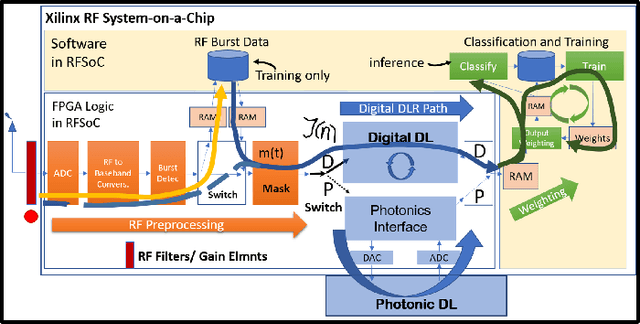
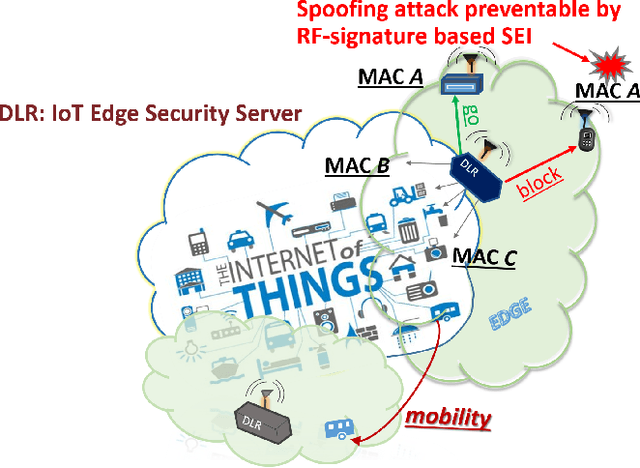
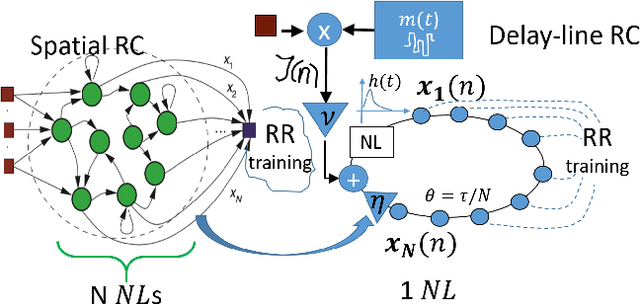
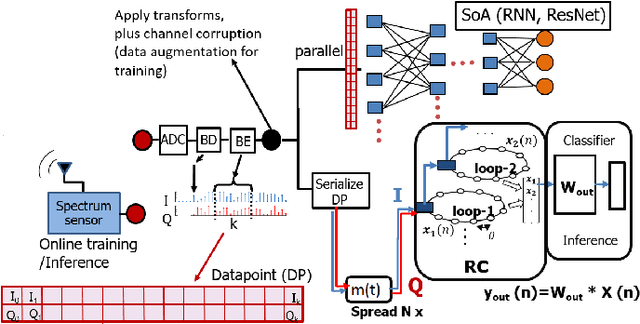
Abstract:We introduce a novel design for in-situ training of machine learning algorithms built into smart sensors, and illustrate distributed training scenarios using radio frequency (RF) spectrum sensors. Current RF sensors at the Edge lack the computational resources to support practical, in-situ training for intelligent signal classification. We propose a solution using Deepdelay Loop Reservoir Computing (DLR), a processing architecture that supports machine learning algorithms on resource-constrained edge-devices by leveraging delayloop reservoir computing in combination with innovative hardware. DLR delivers reductions in form factor, hardware complexity and latency, compared to the State-ofthe- Art (SoA) neural nets. We demonstrate DLR for two applications: RF Specific Emitter Identification (SEI) and wireless protocol recognition. DLR enables mobile edge platforms to authenticate and then track emitters with fast SEI retraining. Once delay loops separate the data classes, traditionally complex, power-hungry classification models are no longer needed for the learning process. Yet, even with simple classifiers such as Ridge Regression (RR), the complexity grows at least quadratically with the input size. DLR with a RR classifier exceeds the SoA accuracy, while further reducing power consumption by leveraging the architecture of parallel (split) loops. To authenticate mobile devices across large regions, DLR can be trained in a distributed fashion with very little additional processing and a small communication cost, all while maintaining accuracy. We illustrate how to merge locally trained DLR classifiers in use cases of interest.
Deep Delay Loop Reservoir Computing for Specific Emitter Identification
Oct 13, 2020

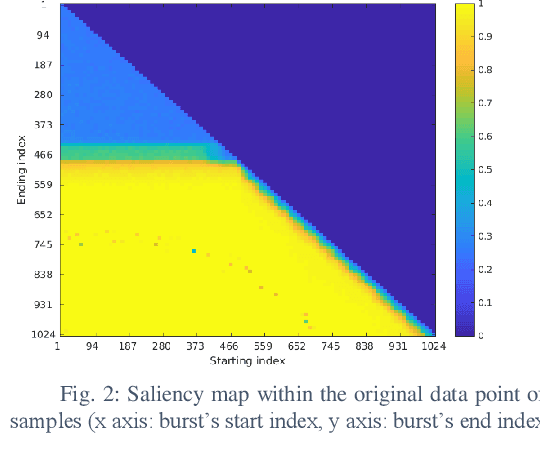
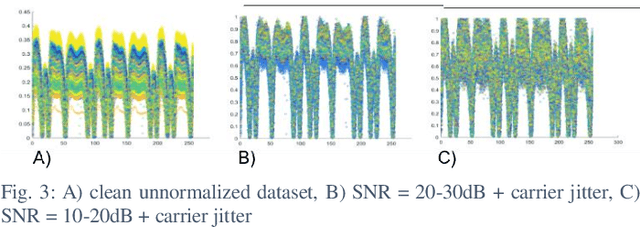
Abstract:Current AI systems at the tactical edge lack the computational resources to support in-situ training and inference for situational awareness, and it is not always practical to leverage backhaul resources due to security, bandwidth, and mission latency requirements. We propose a solution through Deep delay Loop Reservoir Computing (DLR), a processing architecture supporting general machine learning algorithms on compact mobile devices by leveraging delay-loop (DL) reservoir computing in combination with innovative photonic hardware exploiting the inherent speed, and spatial, temporal and wavelength-based processing diversity of signals in the optical domain. DLR delivers reductions in form factor, hardware complexity, power consumption and latency, compared to State-of-the-Art . DLR can be implemented with a single photonic DL and a few electro-optical components. In certain cases multiple DL layers increase learning capacity of the DLR with no added latency. We demonstrate the advantages of DLR on the application of RF Specific Emitter Identification.
 Add to Chrome
Add to Chrome Add to Firefox
Add to Firefox Add to Edge
Add to Edge